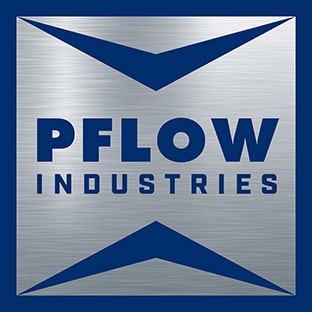PFlow Leads the Way for a New Industry
Vertical reciprocating conveyors are vertical lifts designed to have a lower need for constant service and maintenance than conventional lifts. With multi-level function, they elevate and lower non-passenger items such as pallets, packages, bags, boxes, containers, and more.
VRCs have a large variety of capabilities; some lifts are designed to lift up to 100 lbs, while others are made to lift up to 200,000 lbs! PFlow recognizes that every customer's needs are unique. We analyze and address the specifications of each job to design a VRC that is perfect for you.
When Did VRCs Get Their Start?
The history of vertical reciprocating conveyors is vital to the world of technology. Many companies rely on the help of VRCs to transport materials from one level to another. Conveyor and lift machinery is also an essential part of American and global history.
PFlow was the first company to offer custom, safe, and efficient VRCs to its customers. Follow the history of this groundbreaking machinery that started with Bob Pfleger in the late 1970s.
The Start of it All: 1977-1981
Back in 1977, Bob Pfleger created a new product called the inclined vertical conveyor with the start of PFlow Industries. By 1981, PFlow replaces the “inclined vertical conveyor” with “vertical reciprocating conveyor” and patents its product. VRCs today are a classification of freight lifts that are designed to transport materials only, not passengers.
Bigger and Better: 1983
By 1983, the F Series 4-post VRC is introduced and expands the hydraulic lift product line capabilities to 12,000 lbs and 15’ x 15′ size. The following year, PFlow starts full-scale manufacturing and moves into a 3,500-square-foot office.
Nationwide Changes: 1987
In 1987, the company had a huge breakthrough. They successfully changed the individual state codes of all 50 states. This change made VRCs available for installation throughout the country.
VRCs become their own classification of lifts that follow the ASME B20.1 code. This separates them from passenger elevators, which leads to greater efficiency and ease for their usage and installation.
What are the benefits to Vertical Reciprocating Conveyors?
- Safer and more efficient than a forklift for moving materials.
- Able to move all shapes and sizes of materials up to 100 tons.
- Customized to specific needs of each job and company.
- Less costly than elevators to install, operate, and maintain.
- Meet ASME B20.1 Safety standards.
VRCs are a large piece of history for many companies, but PFlow is the one that paved the way to distinguish them from other elevators. This change led to higher safety and efficiency for those using lifts to move different materials from level to level.
You can rely on the quality of PFlow's vertical reciprocating conveyors. Go to PFlow Industries now to see why PFlow and its machinery is at the top of its industry.
